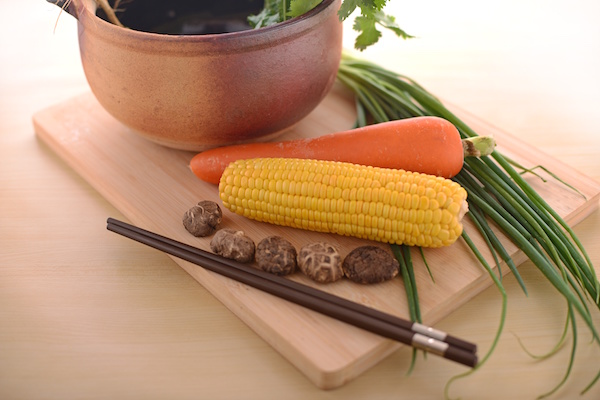
MONDAY, May 18, 2015 (HealthDay News) — People may soon be able to “homebrew” narcotics using genetically modified baker’s yeast and a vat of simple sugar, warn researchers, who are calling for strict regulation of this upcoming scientific breakthrough.
Scientists are rapidly closing in on a way to create a new strain of yeast that would, through fermentation, convert corn syrup into an opiate similar to codeine or morphine, said John Dueber, an assistant professor of bioengineering at the University of California, Berkeley.
A concerted effort by researchers could make yeast-derived narcotics a reality within two to three years, he said.
“When we first started this work a little over a year ago, we thought we were probably about a decade away from a yeast strain that would make enough morphine to be an active amount in the body,” Dueber said. “We have realized these pieces are all moving quicker than we would have originally thought.”
The new yeast could be of tremendous benefit to medicine, allowing for production of cheaper painkilling medications that are potentially more effective and less addictive, Dueber said. The yeast also could be engineered to create other medications based on molecules derived from poppy flowers, including antibiotics or cancer-fighting drugs.
But if the yeast got into the wrong hands, it would provide an easy and inexpensive source for illegal narcotics, he added.
Realizing the potential for abuse, researchers are urging policymakers at the National Science Foundation and elsewhere to create strategies in advance that would deter illicit use.
These could include laws and regulations that tightly control access to the yeast, as well as work in the lab to make the yeast less appealing to drug abusers, said Kenneth Oye. He is director of policy and practices at the Synthetic Biology Engineering Research Center at Massachusetts Institute of Technology (MIT) in Cambridge.
“There are some really exciting and potentially beneficial things that are coming now,” said Oye, who also is an associate professor of political science and engineering at MIT. “And you also have an unusual situation where the scientists that are doing the developing are actually behaving pretty responsibly by and large. They’re saying, ‘Hey, let’s talk about addressing potential problems before problems arise, and not after.’ “
Research teams have been working to recreate a complex 15-step chemical pathway by which poppies naturally produce a set of organic chemicals called benzylisoquinoline alkaloids, or BIAs, researchers said in background notes.
Many existing and potential medications can be derived from poppy-produced BIAs. But, these biochemicals are most notorious as the basis for narcotics like codeine, morphine, oxycodone (Oxycontin) and hydrocodone (Vicodin), researchers said.
Because of their structural complexity, BIAs can’t be chemically synthesized on a commercial scale, the researchers said. Instead, they must be extracted from plants like the opium poppy.
Until now, the separate research teams have been recreating this chemical pathway in piecemeal fashion.
But a new study in the May 18 issue of the journal Nature Chemical Biology describes all but one step of an engineered yeast pathway that can convert the simple sugar called glucose into the narcotic morphine.
Dueber, senior author of the new study, said it would take just a little effort to figure out that last remaining step, and then a good deal more work to “put all of those pathways together into one yeast cell and have them work efficiently enough together to make a large amount of the final product.”
The point of their research wasn’t necessarily to make cheap narcotics, Dueber said. Poppies produce thousands of potentially useful biochemicals. But most are present in such small amounts that it’s currently impossible to make enough to explore their medicinal properties.
Since poppies and BIAs are so closely associated with narcotics, however, the researchers realized that their findings could be put to ill use. “There is the danger of that strain either getting out or having all the information published out there so that someone with know-how could re-synthesize that strain,” Dueber said.
The idea of a drug kingpin delving into the genetic modification of yeast is not far-fetched, according to Dueber. Right now, people can custom-order the synthesis of specific DNA sequences from some companies, he said.
“You can type into your computer the sequence of DNA you want constructed, and they’ll put it in a FedEx package and deliver it to you,” Dueber said. “Then you can put that sequence into your yeast cell and have it expressed.”
To ward off this nightmare scenario, Oye and colleagues have recommended a set of precautions that can be implemented prior to the expected breakthrough. Their ideas appear in an editorial in the journal Nature, which will publish at the same time as Dueber’s paper.
The policymakers make four specific recommendations:
- Engineer the yeast strains to make them less appealing to criminals. They can be designed to produce only opiates with limited street value. Or, they could be made to be so difficult to process that it’s not worth the effort. Opiate-producing yeast strains also could include a DNA watermark to make them more easily traced by law enforcement.
- Tighten security around narcotic-producing yeast strains, similar to that now used with prescription painkillers.
- Make sure that DNA synthesis companies screen all orders for DNA sequences, watching for those that could be used by criminals to generate opiate-producing yeast.
- Extend current narcotics laws to cover opiate-producing yeast strains.
“We have a little time, so let’s take time now to come up with ways to make it easier to protect public health,” Oye said.
More information
For more about narcotic painkillers, visit the U.S. National Institute on Drug Abuse.
Copyright © 2025 HealthDay. All rights reserved.

